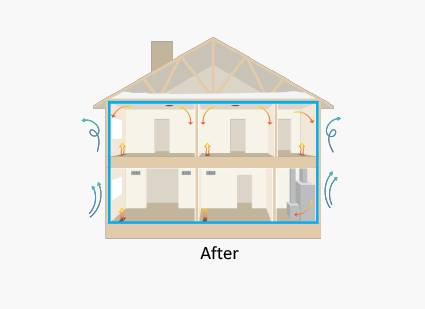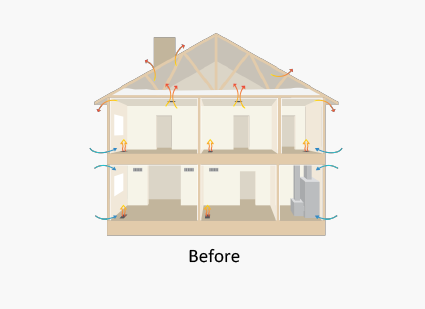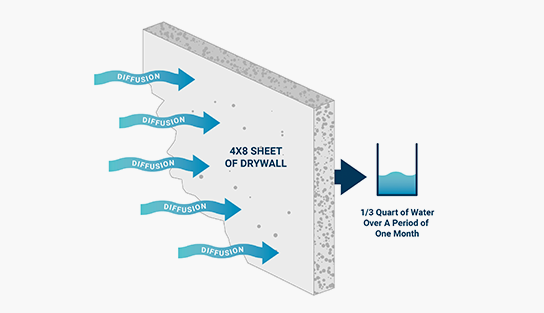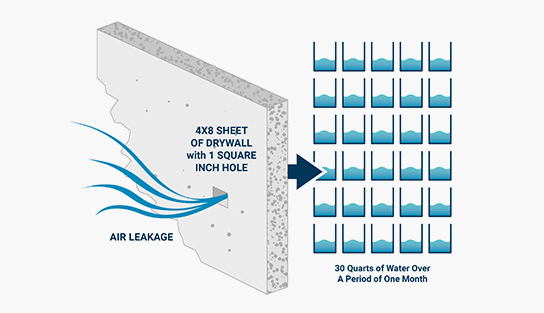

Air sealing is vital to an efficient, durable, healthy home


AeroBarrier addresses 3 of the 4 major risk management controls when constructing a home. Each is necessary to guaranteeing a healhty, efficient,
well built home.
The control of heat flow in buildings requires insulation layers installed properly that are comprised of few thermal bridges, an effective air barrier system, good control of solar radiation, and management of interior heat generation.
Different than bulk water control, a vapor control addresses the moisture that travels via air and is unseen to the naked eye. Once inside a wall cavity, the vapor will go through convective loops in which it can reach dew point and turn from vapor to liquid. This is often seen later as condensation or damp insulation fibers.
In order for air to flow into, out of, or within a building, two requirements must be met: a hole or path must exist for the air to flow through and there must be a driving force. Air flows within buildings are either controlled or undercontrolled. In either case, tje actual flow of air is determined by several factor, including hole size, resistance to flow, and pressure effects. Uncontrolled air flow can lead to comfort, indoor air quality and energy efficiency concerns.
Bulk moisture movement (or liquid flow) has the potential to be the most damaging moisture transport mechanism confronted by a building. Typically thought of as a rain or snow, bulk moisture movement also includes flowing grounwater This can typically be addressed by proper land grade, redirection of water via gutters, downspouts, etc.
 Before
Before
 After
After
Air Leakage carries many properties that will diminish the overall performance and effectiveness of fibrous insultation.
Outdoor temperatures, humidity, and air flow will break down the insulation around your home over time. Even worse, brand new insulaton will not perform as ir was designed if installed in an enviroment with air leakage wich compromises its integrity. Less air leakage means ther is less thermal impact the insulation must combat.
A study by the Fraunhofer Institute for Building Physics, in Stuttgart, showe that a leaky enclosure can decrease the insulation’s effectiveness by a factor of 4.8 - making a 500 sf leaky building require the same amount of heating as a 2,400 sf airtight


Water vapor diffusion is the movement of water vapor through vapor-permeable materials. Vapor diffusion happens through a solid material even when the material has no holes. A typical example of vapor diffusion happens when a material, such as gypsum drywall installed on a wall, separates two zones. If the air on one side of the drywall is very damp, and the air on the other side of the drywall is very dry, diffusion will occur. The drywall will absorb moisture on the damp side and then evaporate it htough the dry side.
Building Science Corporation paper RR-0412: Insulations, Sheathings and Vapor Retarders, display the potential waater intrusion from just a small air leak can be up to 90 times greater than the water that would normally diffuse throught gysum board into the enclosure. AeroBarrier’s guaranteed results remove the air leakage by which the vapor would be transported, stopping diffusion in its tracks.